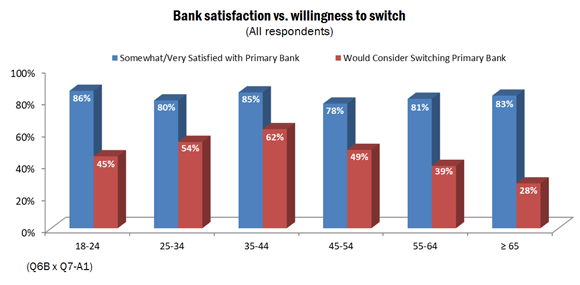There’s a dark side to the so-called “sharing economy” that means bad news for businesses making shareable items. Our chief strategy officer explains.
_______________________________________________________________________________________
By Brad Berens
Inside every positive statement is a negative counterpart. In the second sentence of the U.S. Declaration of Independence, Thomas Jefferson wrote: “We hold these truths to be self-evident, that all men are created equal.” The sentence doesn’t mention women. In his sweeping, seemingly universal statement, Jefferson only includes half the population.
 A similar gap lurks in the popular idea of the sharing economy, where people use digital platforms to share seldom-needed goods so that everybody doesn’t have to buy their own.
A similar gap lurks in the popular idea of the sharing economy, where people use digital platforms to share seldom-needed goods so that everybody doesn’t have to buy their own.
The classic example of the sharing economy is a power drill: everybody needs one from time to time, but most power drills only see a few minutes of use each year, so why should everybody have their own? If it’s free and easy for people in a neighborhood to share a power drill, then that’s good news for the neighborhood and bad news only for the faceless employees of a faraway power drill manufacturing company.
Analog versions of the sharing economy have been around for as long as there have been good neighbors. Gene, the man who sold me my first house in Southern California, left a two-story ladder in the garage and told me that it was, “the people’s ladder.” Folks in the neighborhood knew that they could borrow the ladder at any time.
I kept up access to the ladder during the decade that I lived there: it didn’t cost me anything, and since nobody wanted to store the bulky ladder in their garage, they returned it to mine. When we moved to a new house, the people’s ladder stayed in the garage, where with luck it still resides as a neighborhood resource.
Many people have criticized the name “sharing economy” (here is one example), pointing out that the most successful examples of the sharing economy are Uber and AirBNB, where transactions facilitate getting a ride or renting a room and no real sharing is involved. The sharing economy, in other words, relates to actual sharing the way that Facebook friends relate to actual friends: there’s an overlap, but they aren’t the same thing.
_________________________________________________________________________________________________
People don’t care about banks per se: they care about having a safe place to store their money and being able to get a credit card, home loan, and the like. The fact that historically, banks have had a monopoly on enabling these actions doesn’t predict that banks will continue to have that monopoly.
_________________________________________________________________________________________________
But this column isn’t about the flaws of the sharing economy: it’s about the lurking negative statement inside the sharing economy, whether we’re talking about power drills, transportation, or finding a place to stay when traveling.
When it comes to cars, the positive statement is that people have options beyond traditional car ownership that include Uber, Lyft, Car2Go, Zipcar, Maven, Booked by Cadillac, and others. In the Center’s Future of Transportation survey, we found that only two percent of respondents use these services frequently and 14 percent use them sometimes. But for those groups, “get-a-ride” services have a hugely transformative impact on their overall attitudes about transportation — doubling, for example, their willingness to consider no longer owning a personal car from 20 percent to 40 percent.
That’s the negative statement behind people being willing to give up their cars: as soon as people understand that they have a viable alternative to owning a car, they stop caring about car ownership the way people stopped caring about owning a typewriter once personal computers with word processing programs came along. When I talk with auto marketers, this is why I point out that their ads are missing a key point: most car ads make a “buy this car” argument without making the category-defending prior argument: you should buy a car, any car.
The negative counterpart of the sharing economy is the not-caring economy.
The not-caring economy is important because it shows that businesses confuse the actions that their customers and potential customers want to perform with the devices that they have historically used to perform them.
That’s a bit abstract, so let me concretize it:
- Automakers think that people care about owning cars. There will always be car enthusiasts; however, when other people discover that they have other transportation options — like a combination of public transportation and get-a-ride services — we see that many of them really just care about getting around. Car ownership is not required.
- Camera makers think that everybody cares about owning single-lens reflex cameras, and there will always be shutterbugs who care about having the right gear for the perfect shot. However, most people just want to snap pictures, which they can do perfectly well with their smartphones.
- Hotel owners think that all of their guests care about lobbies and gyms and restaurants and pools, and there will always be travelers who care about how many stars a hotel has. However, when other travelers realize that they have other options like AirBNB, we see that many really just care about getting a room with a bed and bathroom– no concierge or turn-down service required.
- Television makers think that everybody cares about owning a big screen on the wall in the family room, and this will continue to be important for some viewers — particularly sports fans. However, other viewers really just want to watch videos, which they can do perfectly well on laptops, tablets, smartphones and, someday soon, on smartglasses.
On March 20, the Center will release its new Future of Money and Banking report. Here too, we see the not-caring economy at work.
Eighty-two percent of our respondents were satisfied with their banks, but 46 percent of those same respondents were open to switching banks. The percentages shifted with different age groups.

The longest distance between satisfaction and switching consideration was among those 65 and older (83 percent satisfaction versus only 28 percent switching consideration). The shortest distance was among those aged 35 to 44 (85 percent satisfaction versus 62 percent switching consideration).
What this says is that most people don’t care about banks per se: they care about having a safe place to store their money and being able to get a credit card, home loan, and the like. The fact that historically, banks have had a monopoly on enabling these actions doesn’t predict that banks will continue to have that monopoly.
People still talk metaphorically about rolodexes, but many use the address book in their smartphones to manage contacts. Likewise, last week we learned that Amazon wants to create bank-free checking accounts for its customers: the first step in a trend I’ve discussed at length elsewhere.
Never confuse the actions that people want to perform with the tools that they use to perform those actions.
__________

Brad Berens is the Center’s Chief Strategy Officer.
See all columns from the Center.
March 14, 2018

